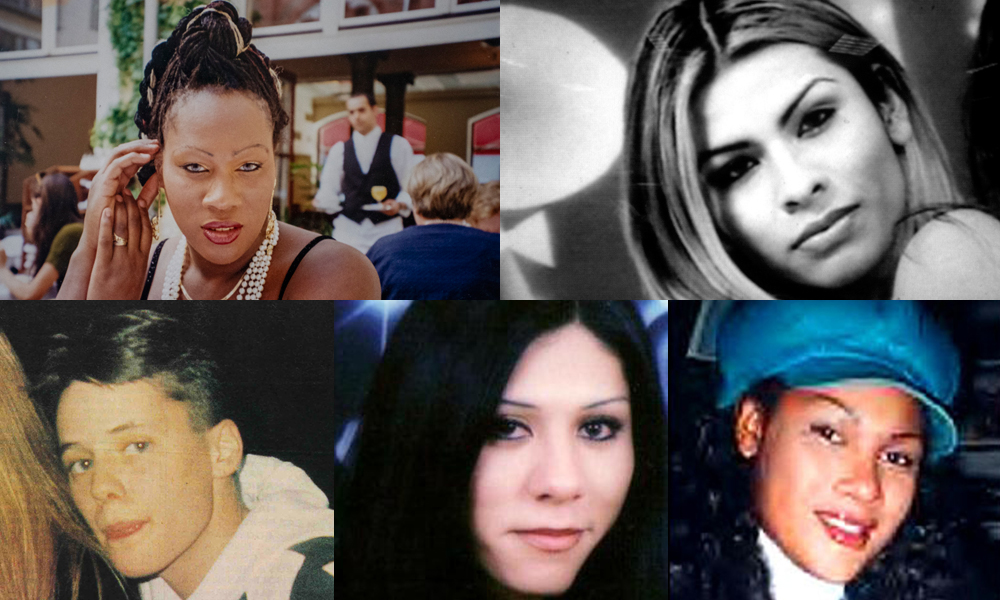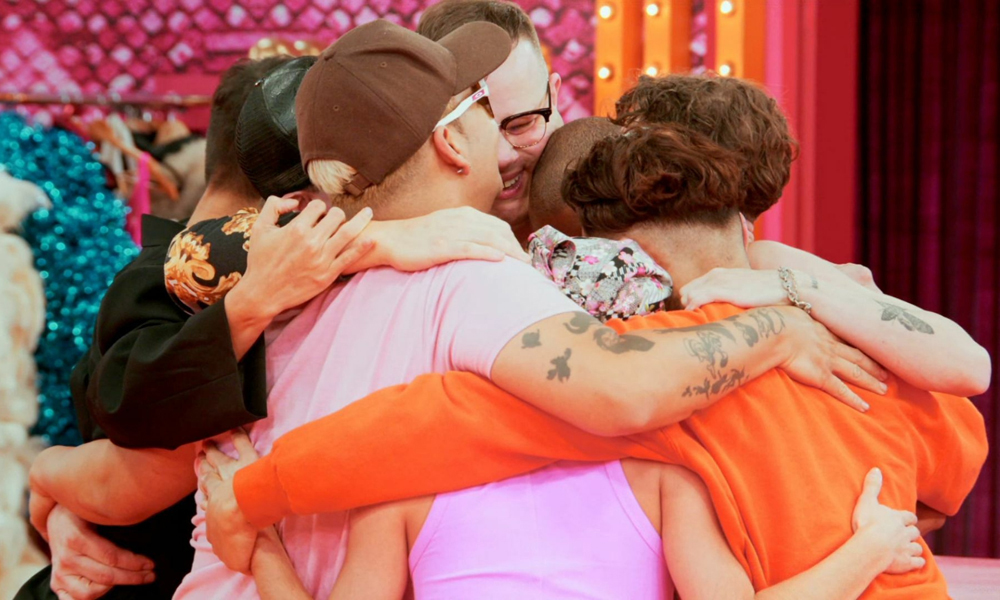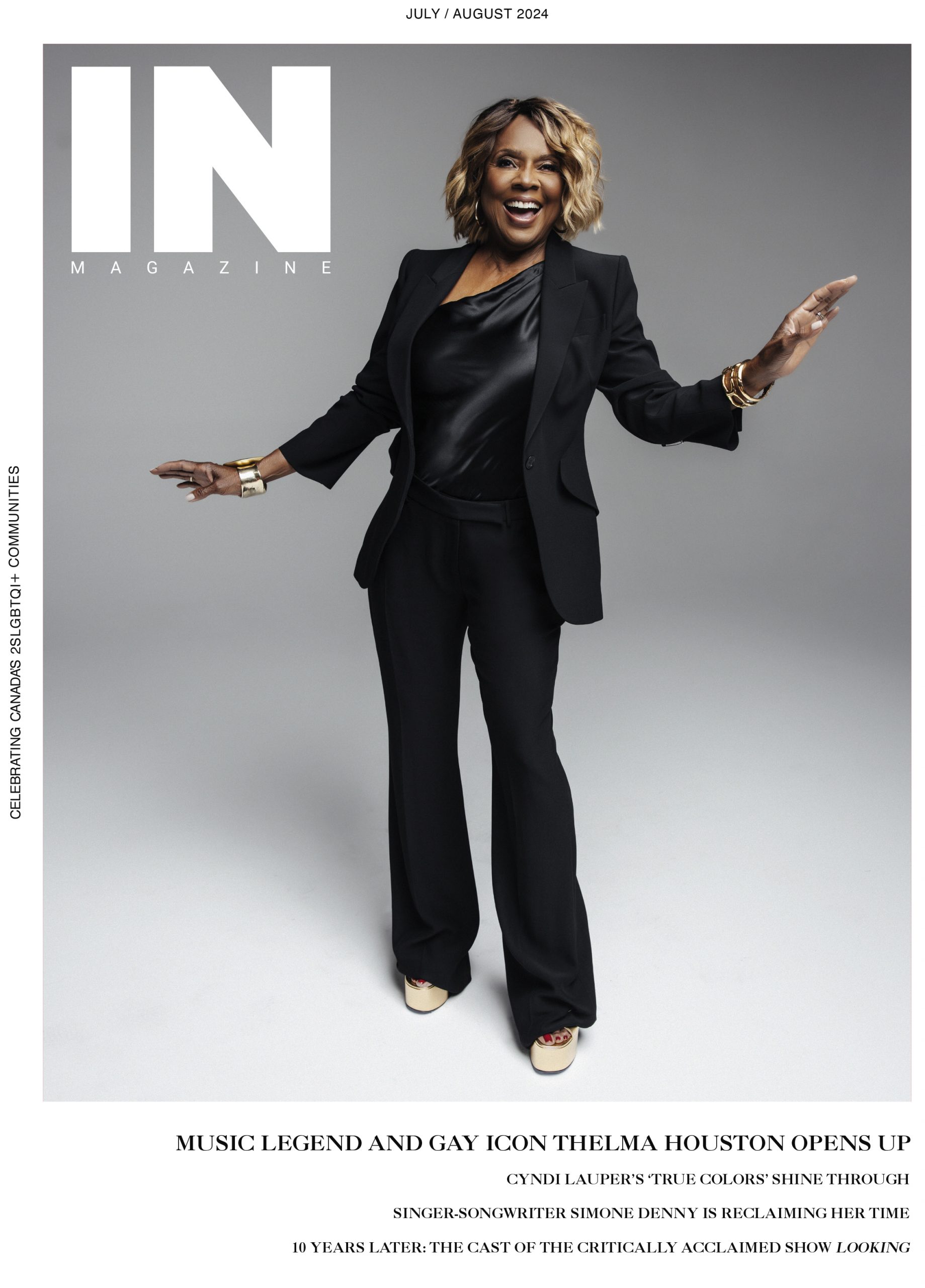Feeling safe to be yourself should be a human right, but for trans people, it’s not that simple…
If you’re a true crime fan, you know there’s no shortage of books, documentaries, podcasts and original reporting dedicated to the victims of violent crimes and the people who commit those crimes. At the same time, we know that cases that get the most attention are usually ones that are committed against white, middle class, cisgender people. From serial killers like Ted Bundy, the Golden State Killer and Paul Bernardo to victims of the most talked-about unsolved cases like JonBenet Ramsey, the media is busy covering a certain (very small) selection of cases. Meanwhile hate crimes, including murders of gay, trans and non-binary people are on the rise. Queer Crime is a monthly column focusing on true crime with an LGBTQ+ spin whether it’s the victim or the perpetrator.
This month we’re taking a look at five cases involving violence against transgender individuals that have impacted the transgender community in profound ways. Because of anti-trans stigma, biases, and lack of opportunity, transgender and gender non-conforming people—especially women of color—are disproportionately affected by violence and often become the target of hate crimes. Transgender Day of Remembrance, which is on November 20th, honours the memory of transgender people whose lives were lost in acts of anti-transgender violence. Here are five cases that involved violence against transgender people.
The murder of Rita Hester
On November 28th, 1998, 34-year old transgender woman Rita Hester was stabbed to death in her own apartment in Boston. Her murder was barely covered by the local media and when it was she was referred to as a “transgender man”, and her name was put in quotes as if it was a nickname. Her death inspired a web project called “Remembering Our Dead” that collects resources, data and the personal stories of trans people affected by violence. Hester’s murder was also the spark for the first Transgender Day of Remembrance in 1999 founded by transgender advocate Gwendolyn Ann Smith.
Hester was aware of the danger trans women faced. She was quoted in a local news article that she hoped the killer of another trans woman was convicted because she was afraid of what would happen if he got off lightly. “It’ll just give people a message that it’s OK to do this. This is a message we cannot afford to send,” she said. Hester’s friends and family had a few ideas about who killed her ranging from a mysterious boyfriend who disappeared after she was killed to a stranger she met at a bar who reacted violently to finding out she was transgender. To this day, Hester’s murder still hasn’t been solved.
The murder of Gwen Araujo
Gwen Araujo was only 17 years old when she was brutally beaten and strangled to death by four men, Michael Magidson, Jose Merel, Jaron Nabors and Jason Cazares in 2002. Araujo spent time with the men as friends for a few weeks and engaged in sexual relations with two of them before they started to suspect she was transgender. After a forced “inspection”, their suspicions were confirmed and in a rage, they all participated in her murder. Nabors turned himself in and pleaded guilty to voluntary manslaughter in exchange for testifying in the murder trials for the three others.
It took two trials—the first ended in a mistrial—for Magidson and Merel to be convicted of second-degree murder and Cazares to be convicted of manslaughter. Their defence teams successfully avoided first-degree murder convictions with hate crime enhancements by using versions of the trans-panic defence to shift the blame to Araujo for her own murder saying she deceived the men and they shouldn’t be responsible for how they reacted.
In 2006, the Gwen Araujo Justice for Victims Act was signed into law in California. The law allows juries to be instructed not to let bias against a victim’s “gender identity of sexual orientation” influence their decision on a verdict, therefore making gay/trans panic defences less viable. In 2014, another bill was signed to prohibit defendants from claiming they were provoked by a victim’s sexual orientation or gender identity when facing a manslaughter charge.
The murder of Brandon Teena
21-year-old transgender man Brandon Teena was raped and murdered in 1993 by John Lotter and Tom Nissen, two ex-cons he knew socially. Teena had been living and presenting as male but was outed as transgender when he was arrested for forging checks and held in the female section of the jail. When Lotter and Nissen found out, they raped Teena and although Teena tried to file a police report he wasn’t taken seriously. According to Sheriff Charles Laux, Teena’s gender identity made him unreliable and no arrests were made.
A few days later, on New Year’s Eve, Nissen and Lotter tracked Teena down at the home he was staying at and shot him and two other people. They were both later arrested and convicted of murder, and are expected to spent the rest of their lives in prison. Teena’s story got nationwide attention with coverage in a number of major outlets, but many of the articles referred to Teena as a lesbian and lacked a focus on his transgender identity and how he had been treated because of it. The Oscar-winning film Boys Don’t Cry and the documentary The Brandon Teena Story both attempted to tell Teena’s story more honestly and his has become a recognizable name connected to transgender rights issues.
The murder of Angie Zapata
Angie Zapata was only 18 years old when she was murdered by 31-year-old Allen Andrade in Colorado in 2008. The two connected on a mobile phone social network called MocoSpace before meeting in person and having sexual relations. When Andrade found out Zapata was transgender he beat her to death with his fists and a fire extinguisher. Although Andrade was heard referring to Zapata as “it” and saying that “all gays things need to die”, his defence team planned to use elements of trans panic to justify the murder.
Zapata’s family pushed for the case to be classified as a hate crime and they succeeded. Andrade was found guilty of first degree murder and a hate crime as well as a number of other charges. This made him the first person to be convicted of a hate crime in the U.S. in a case with a transgender victim. Andrade was sentenced to life in prison.
The murder of Amanda Milan
While many transgender victims’ murders are connected to a sexual relationship of some kind, Amanda Milan was murdered simply for being out in public while trans. In the early morning hours of June 20th, 2000, Milan was walking near the Port Authority Bus Terminal in New York City when a man named Dwayne McCuller started harassing and threatening her. Milan confronted him and asked him if he wanted to fight to which McCuller responded no. As he started to walk away, another man, Eugene Celestine, offered McCuller a knife. McCuller took the knife and stabbed Milan in the neck with it before fleeing. He plead guilty to second degree murder and was sentenced to 17 years in prison.
Milan’s murder happened only days before the annual Pride parade in New York and it got a lot of attention in the city. Some people believed her death was the spark the trans community needed to push for changes. Demonstrations were held on the disconnect between transgender rights and LGBT communities as a whole and the ways transgender people had been forgotten in a lot of the LGBT movements. Trans people were ready to demand their rightful place in the queer community. Milan’s case also contributed to a broader definition of gender being added to the New York City Humans Rights Law.
These five transgender lives lost to violence are not isolated incidents. 2021 has already been the deadliest year on record for trans people and it’s likely that because of misgendering, biased investigations and inaccurate reporting, there are even more victims that aren’t acknowledged as trans. The fight for trans rights is an important part of the fight for human rights, and the world still has a long way to go.
For more of Courtney Hardwick’s fascinating QUEER CRIME series click here.






Moera Shapiro / 23 September 2022
P.S. I forgot to mention that I actually knew Rita Hester because she was a drag performer at the bar Jacques in Boston, where I hung out all the time throughout much of the 1990s. She was merely an acquaintance and I never got to know her. Though once I let her drive my car and she almost crashed it, lol….. You mentioned in your article a quote from her about the murder of another trans woman. That woman was Chanel Pickett, who was a twin. Her twin sister was also trans. BOTH ended up murdered. Chanel’s killer was a real asshole who lied about not knowing Chanel was trans at his trial, using a “gay panic” defense (partially), also saying that he took her back to his apartment and that she “freaked out on coke” and he killed her by accident. One girl in the know told me that he he was known by herself and some other trans girls at Playland and had picked them up before. It seemed that it was unusual for him to actually bring one-night stands back to his place and the murder was at least partly an attempt to keep her “quiet” so his roommates wouldn’t know he was sleeping with a trans girl. Unfortunately the killer was acquitted of murder and only spent two years in prison!
Moera Shapiro / 23 September 2022
Why for the past 6-8 years do people and media keep saying “it’s been the deadliest year on record for trans folk”? What about the 1970s, 80’s and 90’s? How do people even have ANY idea of this? It wasn’t quantified in those past decades, and it’s more likely that there were more murders of trans people for JUST being trans in the 70s, 80s and 90s. Prior to the 70’s maybe it was even WORSE but nobody really knows. I start with the 70’s because I believe more people were going out as themselves than they were in prior decades. Yes, even in the 50’s and 60’s there were many trans people walking the streets in large cities, but it would be even harder to know how many were killed at that time than even the 70s, 80s and 90s. Sometimes it might be reported that someone was dressed as “the opposite sex” when killed. Otherwise, the person would be fully misgendered. So unless someone goes through every police report and newspaper article, perhaps trying to figure out in a particular city how many trans people might have been killed, there is really no way of knowing any of this. And people nowadays assume that every trans person who is killed is killed JUST for being trans. Many are, but when it comes to issues of prostitution, it can be the same as women who are killed by their pimps or clients and just part of the concept and reality of sex workers being seen as expendable, and being violently attacked for reasons other than just their gender.